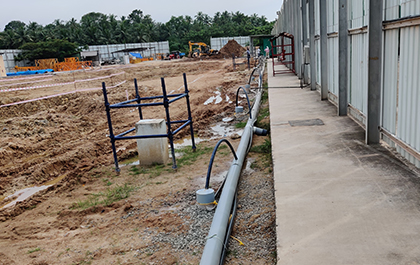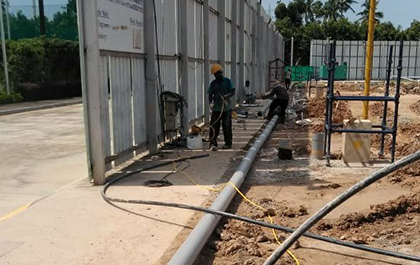Deep well dewatering is recognized as a cost effective and efficient way for medium to long term dewatering of larger projects where the excavation is greater than 4m or when a WellPoint system is deemed inefficient.
Our system has many advantages:
- Minimal noise
- Flexible system
- No limits on drawdown
- Fewer Deep- wells required than well system
The main objective in any dewatering exercise is to lower the water table below the working platform and maintain the reduced level economically and efficiently for the duration of the dewatering period.
The soil profile and its permeability in and around the site will determine which type of dewatering system will be most effective. This in turn will allow DEWATERING to formulate the number and size of wells required to lower the water table for excavation. Positioning may also be considered to suit the client’s construction requirements.
Groundwater management involves strategic positioning of wells to provide a dry working platform and to limit the effects on the groundwater table (GWT) beyond the site. The reduced water table forms a cone of depression between the natural GWT and the submersible pump.
The extent of local reduction in the water table is dependent on the pump depth, capacity and the permeability of the soil. The depressed water table at distance (say H) from the natural GWT depicts the dewatering of a typical high-rise site


